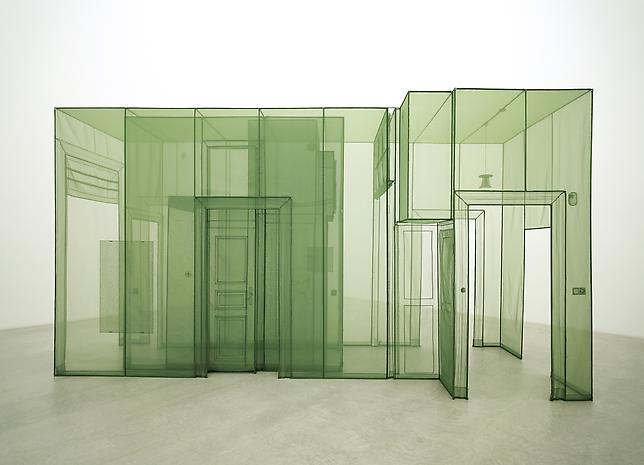Derek Paul Boyle, "Mirror Step"
 |
| "Mirror Step" by Derek Paul Boyle |
This is such a simple concept but so powerful in its simplicity. It draws attention to the mundane process of walking on very ordinary steps.
Having the mirror on the tread clearly reflects the sky above but also the person walking over this tread, putting the viewer into the art. It also means the mirror is a surprise to someone ascending the steps, where the tread only becomes visible at a certain point. From the top of the steps it is already visible looking down - a surprise to be sure, but not one as sudden as discovering the mirror mid-ascent.
Do Ho Suh, "Wielandstr. 18, 12159 Berlin"
 | |
| "Wielandstr. 18, 12159 Berlin" by Do Ho Suh |
I had the pleasure of seeing this piece by Korean artist Do Ho Suh in person at the Museum of Contemporary Art in Chicago. Suh's work is frequently a direct reference to architecture he has experienced. Many of his pieces include fabric full-scale replicas of objects or places, such as this one, a fabric representation of an apartment in which he lived in Berlin.
Walking through this work is a little like walking through a digital model of the original apartment - the features are all carefully detailed, down to the scrollwork on the doorknobs and the buttons on the intercom, but the sheerness of the fabric gives it a very ethereal quality, like a ghost or after-image of the original place. Because every minute detail is recreated in the fabric and stitching, it draws the viewer's eye, bringing attention to things that are generally overlooked.
Much like an architectural drawing, the seaming of the fabric creates strong lines at changes in plane, which are not ordinarily perceived in built spaces as major features. In the fabric the seams give emphasis to objects like conduit and wall devices - things that architects often try to downplay in actual buildings.
HOT TEA, "Rituals"
(please click on the link to see the image on flickr.com - the artist has restricted sharing access)
I'm not the first to write about this fantastic installation - Luna Park has many beautiful photos and interestingly those photos are after the installation has already started to unravel and "decay."

No comments:
Post a Comment